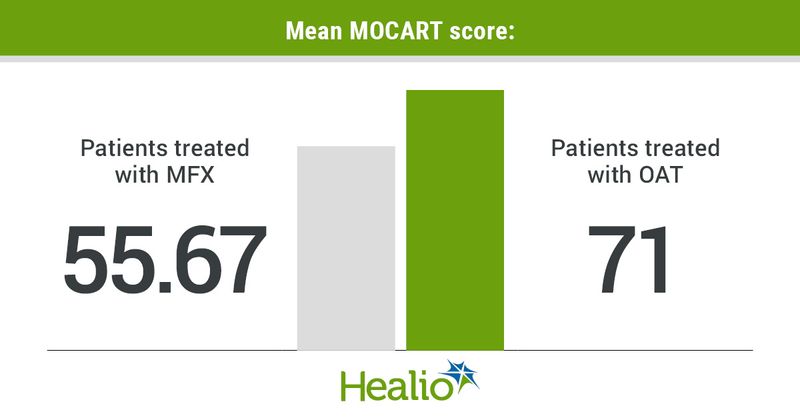Osteochondral autograft transplantation may be an effective treatment for talar lesions
Osteochondral autograft transplantation has shown positive clinical outcomes in the treatment of medium-sized osteochondral lesions of the talus, according to a study by researchers at Hospital for Special Surgery.
Between 2015 and 2018, Taylor Cabe, BS, and colleagues from HSS analyzed 50 patients with osteochondral lesions of the talus (OLTs). Overall, 27 patients were treated with microfracture with extracellular matrix augmentation (MFX) and 23 patients were treated with osteochondral autograft transplantation (OAT).

Researchers collected patients’ foot and ankle outcome score (FAOS) and patient-reported outcome information system (PROMIS) scores, and MRIs after surgery were evaluated using a modified magnetic resonance observation of cartilage repair tissue (MOCART) score, according to the abstract.
Functional outcome scores improved from preoperative to postoperative measures in both MFX and OAT groups. However, the OAT group displayed a greater statistically significant increase in FAOS and PROMIS scores, reporting lower pain and depression domains than patients treated with MFX.
“Finally, the mean overall MOCART score was 55.67 within the MFX cohort, average follow- up 15.29 months, and 71 within the OAT cohort, average follow-up 15.8 months. This difference was also statistically significant,” the researchers wrote in the abstract. “These results suggest filling the lesion with transplanted autograft bone and native, hyaline cartilage may perform better than and the biomechanically inferior fibrocartilage produced following microfracture even when augmented with adjuvant therapy,” they wrote.
“OAT may result in better overall clinical outcomes, specifically in a population of patients with medium-sized lesions,” the researchers concluded.

